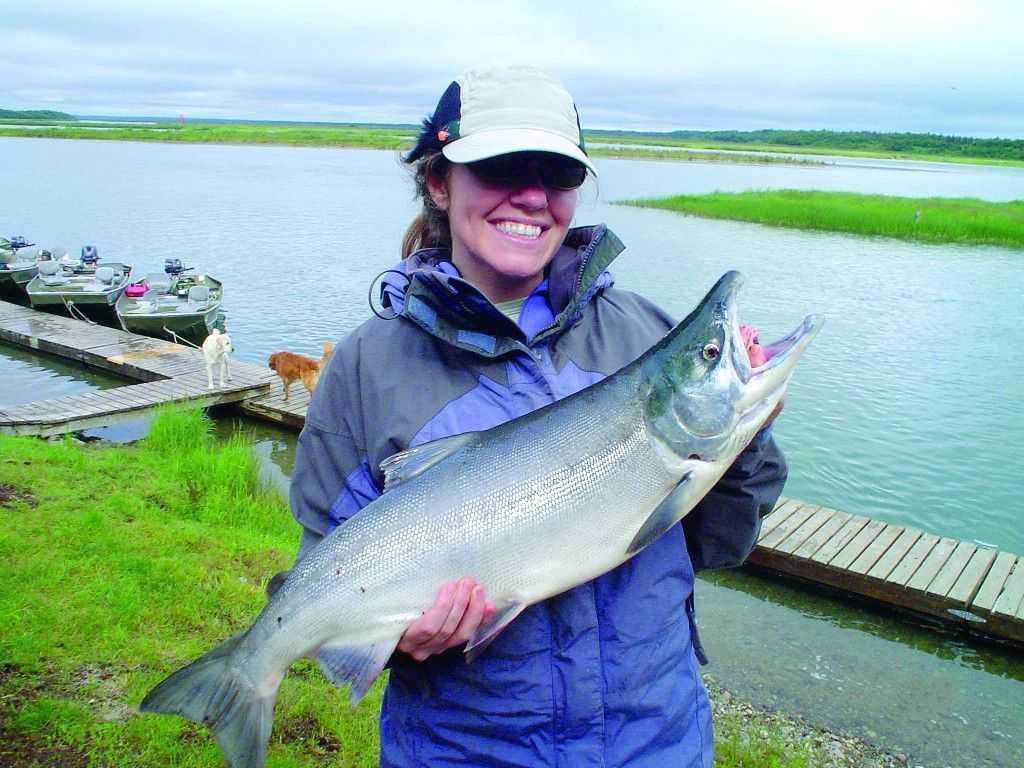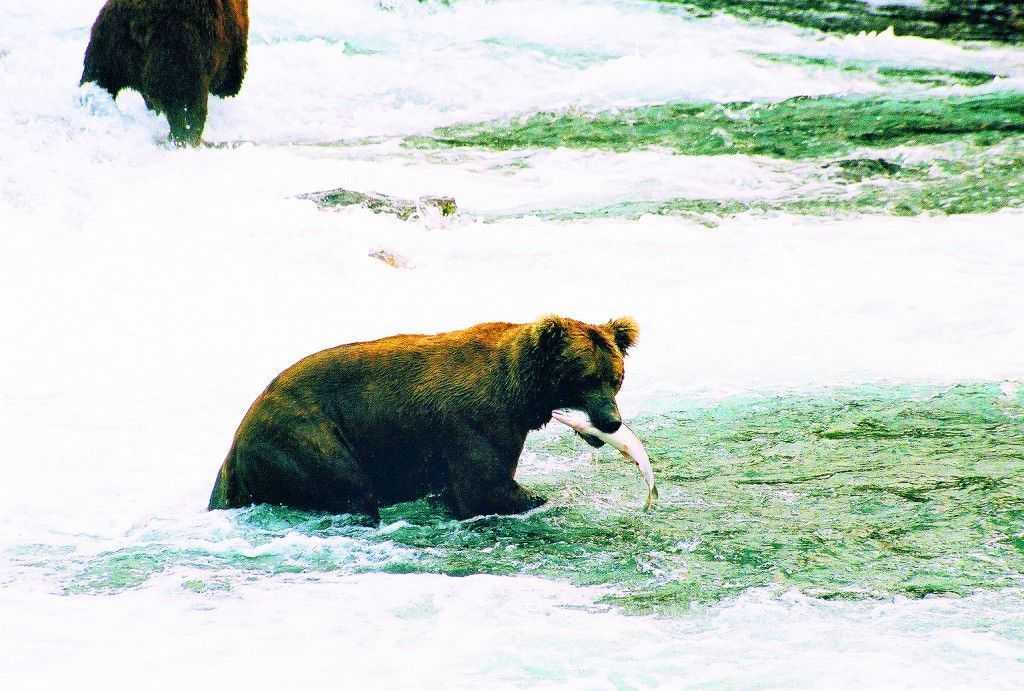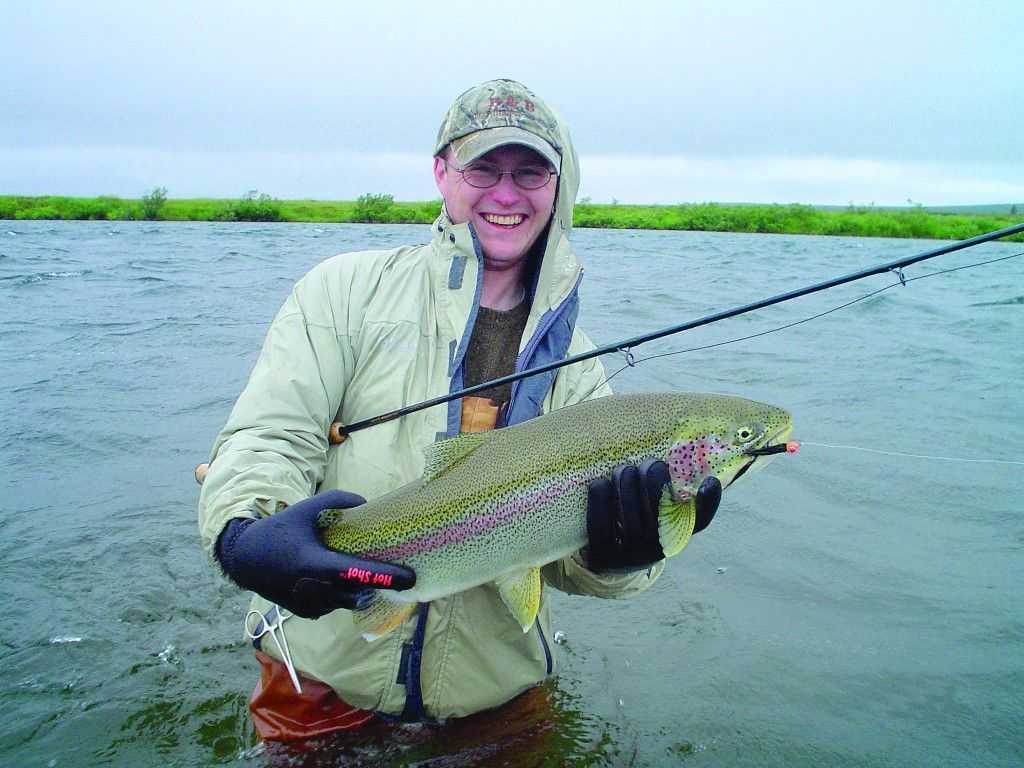Cast after cast, arm and shoulder grow weary from heaving a heavy sink-tipped fly line long distances across a wide expanse of rushing river. Lips crack from windburn. An angry red groove wears into the crease below the first knuckle on your right pointer finger. It’s where the fly line slides with each strip as you retrieve a 3-inch-long, heavily weighted version of a streamer called an Egg Sucking Leech.
Sounds painful, right? Well it is… until the line on the surface zips taut, throwing a fine spray into the air and bowing your rod to what could be a 30-inch rainbow trout. And this excitement occurs on nearly every third cast. At least it did when we fished the American River in western Alaska’s Bristol Bay region. It was darn near ridiculous. The average fish was large enough to eat the trout we fish for in the Blue Ridge Mountains.

We fished out of Alaska Sportsman’s Lodge, one of several in the area that put anglers in the middle of outrageously good fishing, including one of the largest salmon runs in the world and the largest native rainbows you’re ever likely to see. Most mornings, we hopped on a floatplane and flew out across magnificent scenery to another incredible fishery.
Home base was 250 miles southwest of Anchorage, a relatively harrowing, yet scenic, flight in an old DC-3 that smells of fuel. But it was all part of the adventure once we set down in the village of Igiugig on the banks of the Kvichak River. The Kvichak connects Bristol Bay to Alaska’s largest lake, Lake Iliamna. Every year, salmon move up the Kvichak in the millions to spawn in Iliamna’s tributaries.

It’s as unspoiled a place as exists in the world these days, yet this pristine drainage is under threat. The Pebble Mine project, an enormous gold, copper and molybdenum mine proposed for the area has been on hold for about a decade thanks to public outcry from Alaskans and conservation groups. EPA recently released a draft determination to guard the watershed against such a development. That determination is currently open for public comments, which can be submitted at www.regulations.gov. The agency has projected the project would destroy up to 94 miles of stream and up to 5,350 acres of wetlands, ponds and lakes. The mine project would cover a footprint of 7 square miles with waste disposal needs of 19 square miles near the headwaters of the world’s largest sockeye salmon fishery.
Our trip was timed to catch the July sockeye salmon run, and I hate to admit it, but catching them was more like collecting meat than fishing. The sockeye move upriver in pods determined to reach their spawning grounds to conduct business before dying and decomposing to feed the entire ecosystem, including those giant rainbows. With a fly rod and a streamer, we caught enough sockeye in a single day to smoke, ship home and feed the family for months. And you don’t know a fight until you’ve hooked a fish whose sole remaining purpose on earth is to swim hundreds of miles upstream to spawn and die where it was hatched.

On the subject of good fights, we geared up to heavy casting tackle to fish the king, or Chinook, salmon run on the Nushagak River. The four other salmon are present, but the “Nush” is likely Alaska’s best Chinook run. Back bouncing eggs sacks from a jon boat, the angler’s responsibility is to manage the rod while the guide steers the boat. But once a big 20- to 40-pound Chinook picks up the bait, it becomes a test of wills.
With unspoiled opportunities like these, Bristol Bay is an angler’s dreamland, protected by locals who make a living off its natural resources. As long as there is money buried in the ground for someone to exploit, the threat of a mine will likely remain. However, with several recent setbacks, including pullouts by major investors, the Pebble Mine appears to remain on hold for the moment. Widespread support for EPA protections could put the Pebble Mine proposal to rest.
The more people who get the chance to experience the area’s carefully managed natural resources, the more resistance there will be to projects like the Pebble Mine. There is no way any angler would be in favor of ruining a place where 27-inch rainbow trout eat mouse patterns skated on the surface and some of the world’s best salmon, grayling and trout fishing exist all in the same place.
How do you feel about the Pebble Mine project? Are there similar projects in your area that are destroying the natural habitat?
[easy-social-share]